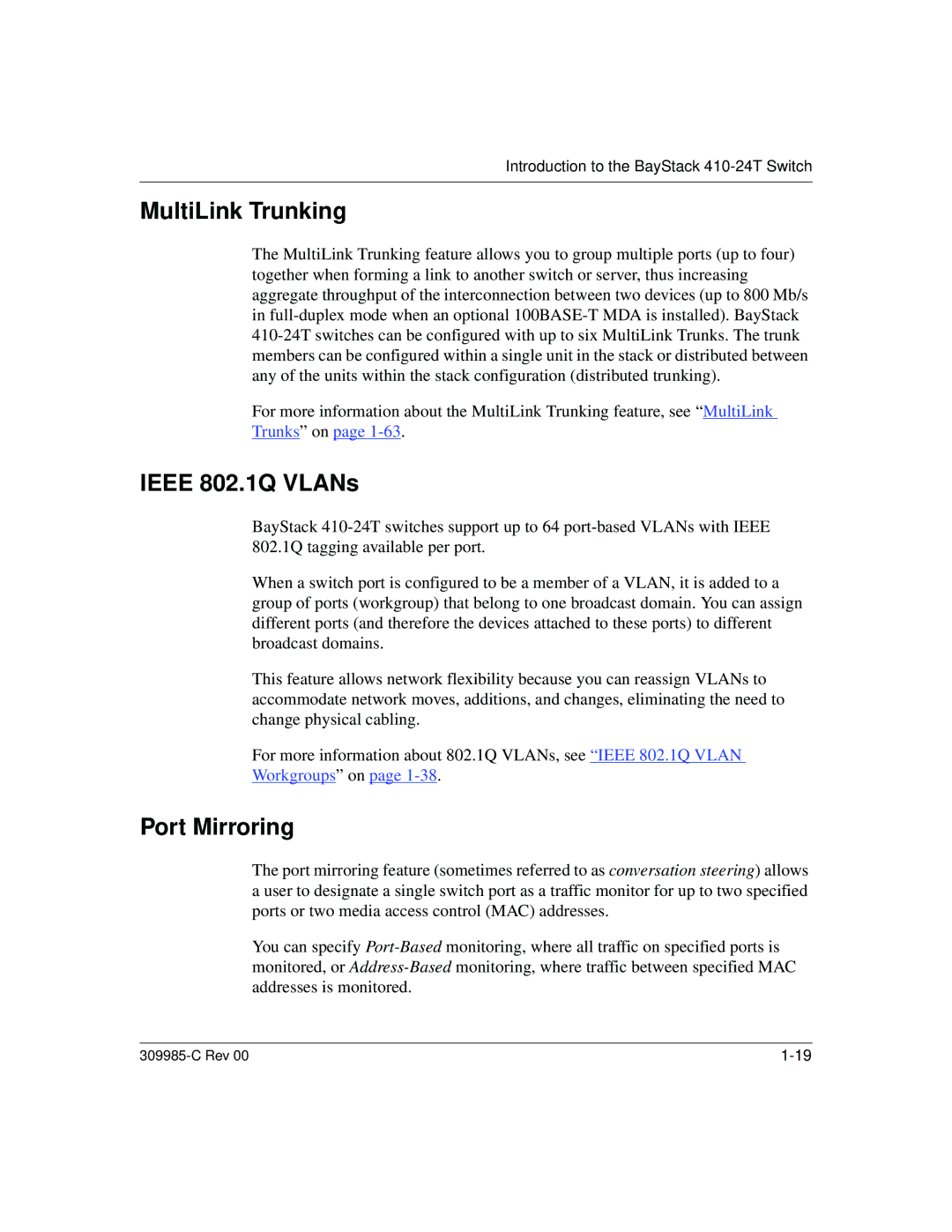
Introduction to the BayStack 410-24T Switch
MultiLink Trunking
The MultiLink Trunking feature allows you to group multiple ports (up to four) together when forming a link to another switch or server, thus increasing aggregate throughput of the interconnection between two devices (up to 800 Mb/s in
For more information about the MultiLink Trunking feature, see “MultiLink Trunks” on page
IEEE 802.1Q VLANs
BayStack
When a switch port is configured to be a member of a VLAN, it is added to a group of ports (workgroup) that belong to one broadcast domain. You can assign different ports (and therefore the devices attached to these ports) to different broadcast domains.
This feature allows network flexibility because you can reassign VLANs to accommodate network moves, additions, and changes, eliminating the need to change physical cabling.
For more information about 802.1Q VLANs, see “IEEE 802.1Q VLAN
Workgroups” on page
Port Mirroring
The port mirroring feature (sometimes referred to as conversation steering) allows a user to designate a single switch port as a traffic monitor for up to two specified ports or two media access control (MAC) addresses.
You can specify
|
